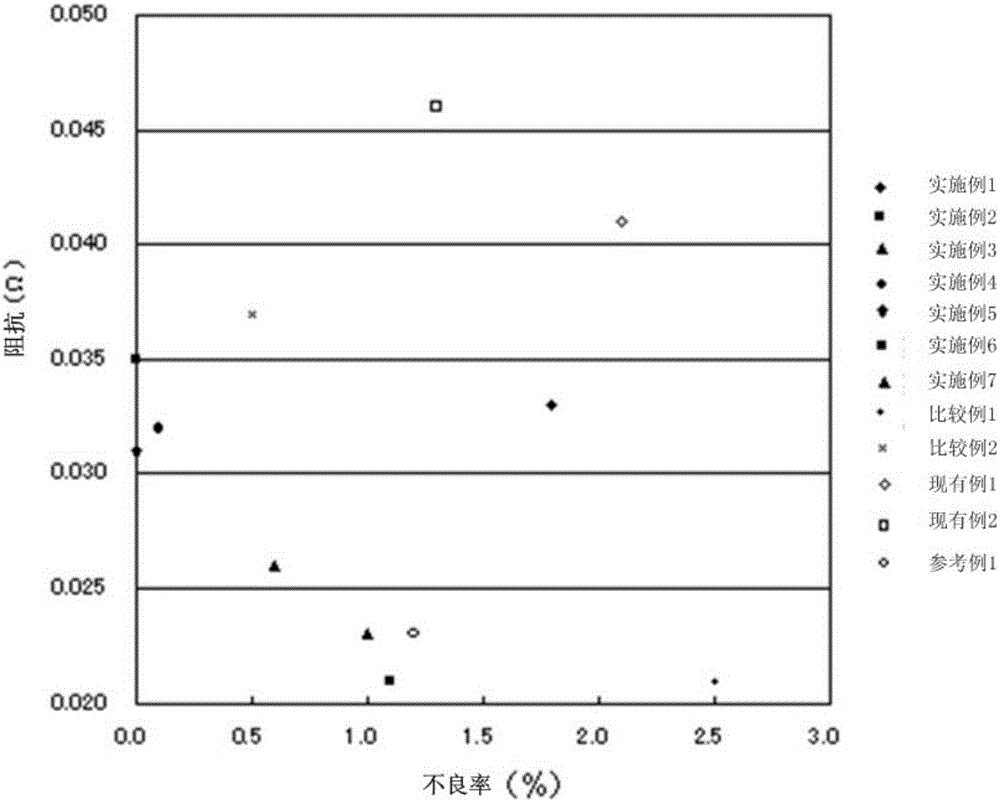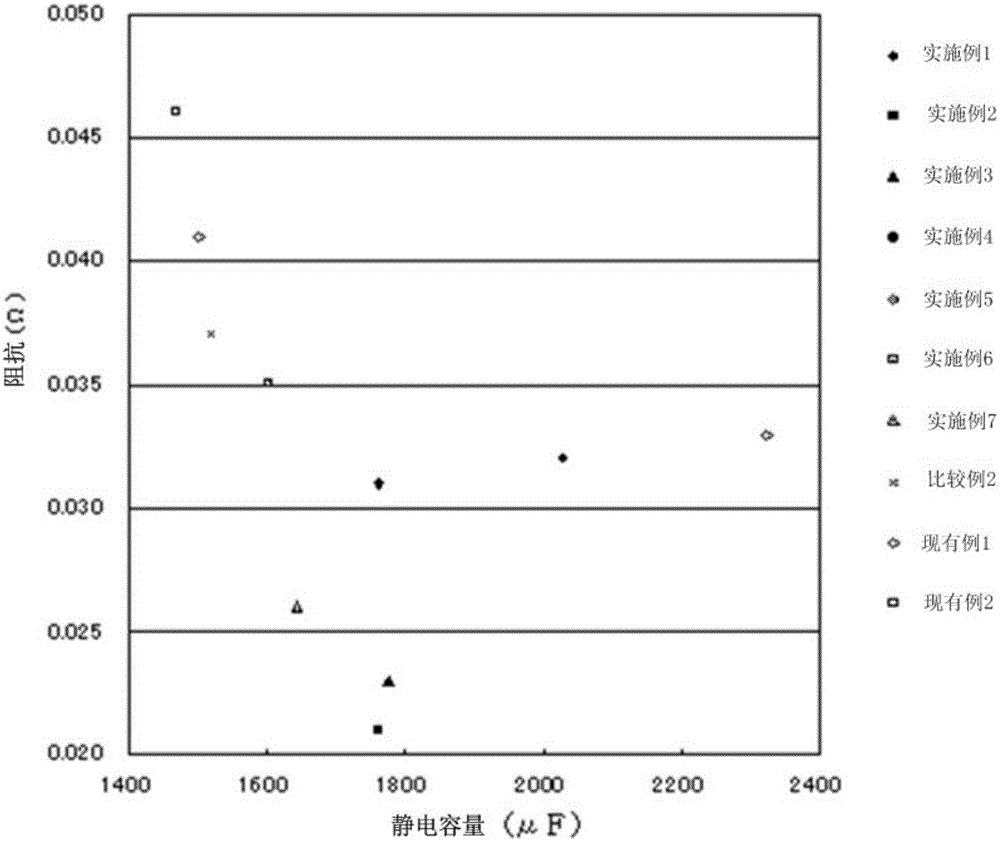Capacitor separator and capacitor
A technology for capacitors and diaphragms, which is applied in the field of diaphragms for capacitors and capacitors. It can solve problems such as deterioration of impedance characteristics and increase in paper density, and achieve miniaturization, strength characteristics, and excellent short-circuit resistance.
- Summary
- Abstract
- Description
- Claims
- Application Information
AI Technical Summary
Problems solved by technology
Method used
Image
Examples
Embodiment 1
[0121]The pulp was dissolved using TCF with a degree of polymerization of 700 to prepare a cellulose / NMMO solution having a composition of cellulose / NMMO=5 / 95 (% by weight, the same applies hereinafter). To the obtained cellulose / NMMO solution, PET fibers with a diameter of 3 μm and a fiber length of 1.0 mm were added in such an amount that cellulose / PET fibers=70 / 30, and a T-die extruder was used to form a slit of 0.15 mm. Extruded to the water (H 2 O) In a coagulation bath composed of regenerated cellulose. The regenerated cellulose was washed with a three-tank ion-exchanged water washing bath, then solvent-replaced with a three-tank isopropanol (hereinafter referred to as "IPA") bath, and dried with a tumble dryer to produce Thickness 29.8μm, density 0.31g / cm 3 , A porous membrane with an average pore diameter of 0.24 μm.
Embodiment 2
[0123] TCF linter pulp with a degree of polymerization of 1500 was used to prepare a cellulose / NMMO solution composed of cellulose / NMMO=10 / 90. To the obtained cellulose / NMMO solution, PET fibers with a diameter of 3 μm and a fiber length of 1.5 mm were added in such an amount that cellulose / PET fibers=50 / 50, and a T-die extruder was used to form a slit of 0.04 mm. After extruding and passing through an air gap of 10 mm, the cellulose was regenerated by dipping in a poor solvent coagulation bath of 20% by weight of NMMO. The regenerated cellulose was washed with a three-tank ion-exchange water washing bath, and then freeze-dried to obtain a thickness of 29.6 μm and a density of 0.11 g / cm 3 , A porous membrane with an average pore diameter of 4.97 μm.
Embodiment 3
[0125] TCF linter pulp with a degree of polymerization of 1500 was used to prepare a cellulose / NMMO solution composed of cellulose / NMMO=10 / 90. To the obtained cellulose / NMMO solution, a PET fiber with a diameter of 0.7 μm and a fiber length of 0.5 mm was added in such an amount that cellulose / PET fiber=99.5 / 0.5, and a T-die extruder was used to form a 0.04 mm Slit extrusion, passing through an air gap of 10mm, dipping in 20 wt% NMMO poor solvent coagulation bath to regenerate cellulose. The regenerated cellulose was washed with a three-tank ion-exchange water washing bath, and then freeze-dried to obtain a thickness of 28.8 μm and a density of 0.12 g / cm 3 , A porous membrane with an average pore diameter of 4.55 μm.
PUM
 Login to View More
Login to View More Abstract
Description
Claims
Application Information
 Login to View More
Login to View More - R&D
- Intellectual Property
- Life Sciences
- Materials
- Tech Scout
- Unparalleled Data Quality
- Higher Quality Content
- 60% Fewer Hallucinations
Browse by: Latest US Patents, China's latest patents, Technical Efficacy Thesaurus, Application Domain, Technology Topic, Popular Technical Reports.
© 2025 PatSnap. All rights reserved.Legal|Privacy policy|Modern Slavery Act Transparency Statement|Sitemap|About US| Contact US: help@patsnap.com



